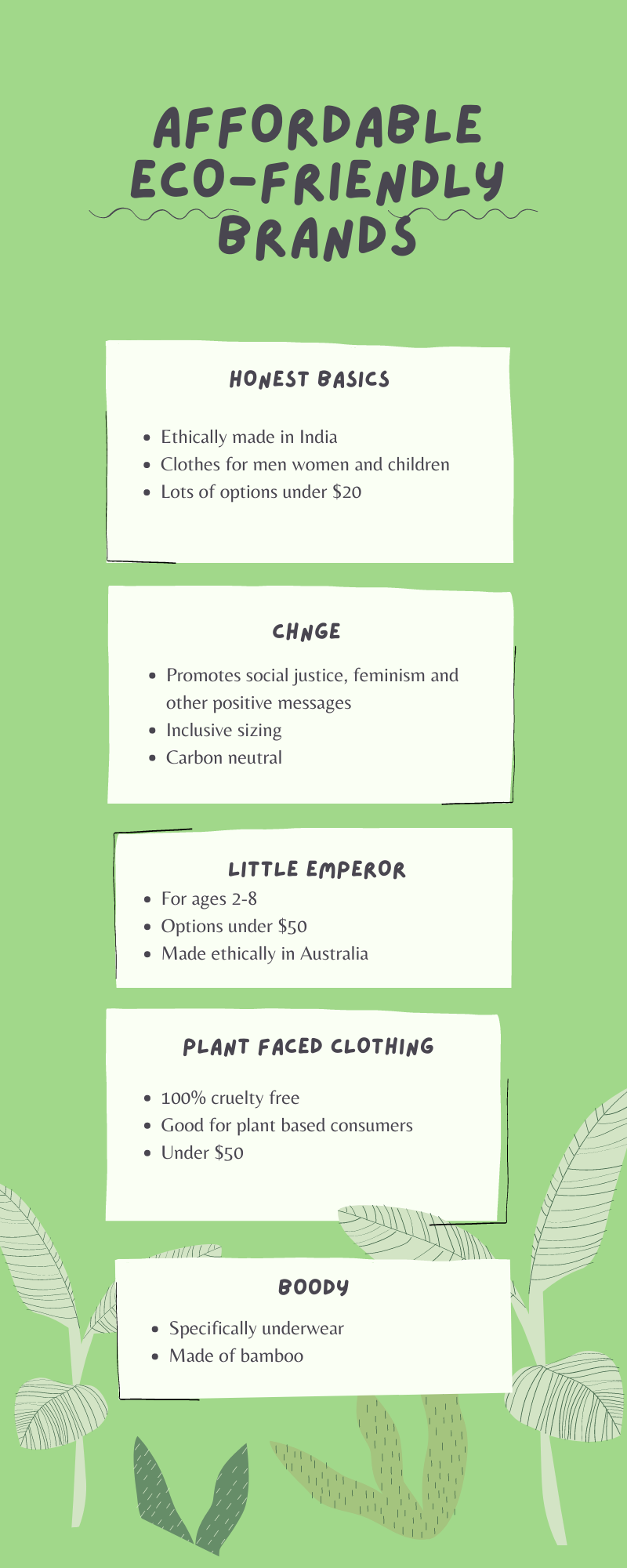by Gabby Eubanks
Magazine Editor

The push for sustainable living and eco- friendly behavior is becoming more and more noticeable in American society. The knowledge of how much waste there is in America is not a new understanding, but what you may not know are the causes. It is often portrayed as being the average person’s responsibility to be eco friendly and recycle for the sake of the planet, but large corporations are the main sources of pollution.

One main contributor is the fashion industry through textile manufacturing and fast fashion. ‘Fast Fashion’ is when a clothing company mass manufactures clothing for a very low cost in order to sell large amounts for profit. The clothing is often cheaply made, wears out fast, and is often replaced or discarded by the purchaser after a short period of time.
The concept of fast fashion has changed how society views clothing to something that is more temporary and expendable. Worldbank.org reports that “less than 1% of used clothing is recycled into new garments.” Another factor reported by The Council for Textile Recycling is that “Americans throw away 70 pounds of clothes and other textiles every year.” All of this clothing ends up in landfills
Industry's negative impact on climate increases
Climate change awareness has been prevalent in society since the rise of the ‘hippy movement’ in the 1960s but recently the fashion industry, mass manufacturing and importation of textile goods has been increasingly affecting the environment. The Alliance for Sustainable Fashion reported that "if the current trajectory continues, the industry’s share of annual carbon emissions will soar to 26 percent by 2050.” This will greatly affect the earth’s atmosphere and contribute to global warming.
Another issue rising is the water pollution that is created by the fashion industry. According to Sustainyourstyle.org, “Every time we wash a synthetic garment (polyester,nylon, etc), about 1,900 individual microfibers are released into the water, making their way into our oceans. Scientists have discovered that small aquatic organisms ingest those microfibers. These are then eaten by small fish which are later eaten by bigger fish, introducing plastic in our food chain.”

The fashion industry also uses an abundance of natural resources to manufacture its products. Worldbank.org reports: “Every year the fashion industry uses 93 billion cubic meters of water — enough to meet the consumption needs of 5 million people.”
Public needs to be educated
The main goal of the fashion industry is to keep your focus on yourself and make it your responsibility to fix the pollution problem, but don’t forget that the main contributors are the manufacturers, not the consumers.
However, each person can do his or her part to reduce pollution and prevent climate change.
To see how much college students knew about the impacts of fast fashion, I interviewed several Rochester University students to hear their thoughts.

What can we do?
Shopping locally, from eco-friendly brands, or purchasing used clothing at a thrift store helps prevent increased pollution and climate change.
Sophomore Paige Steele, an interdisciplinary studies major, said, "I enjoy thrifting to avoid buying from problematic brands that contribute to the problem. It's also really good for my college student budget."
Purchasing from smaller brands both helps the local businesses thrive, as well as helping preserve the environment.
Junior Mikayla Hubbard, an interdisciplinary studies major, said "I usually shop in my dad's closet, but I also really enjoy buying used clothes or shopping at local shops because I know no one else has the clothes."
Thus, next time you need new clothes, don't just go to your local mall to pick up cheaply made tops or pants. Instead, shop local, go to a thrift store or purchase from a brand that is eco-friendly.
As far as we know, only one earth exists for us to live on, let's try our best to keep it clean.








Comentarios